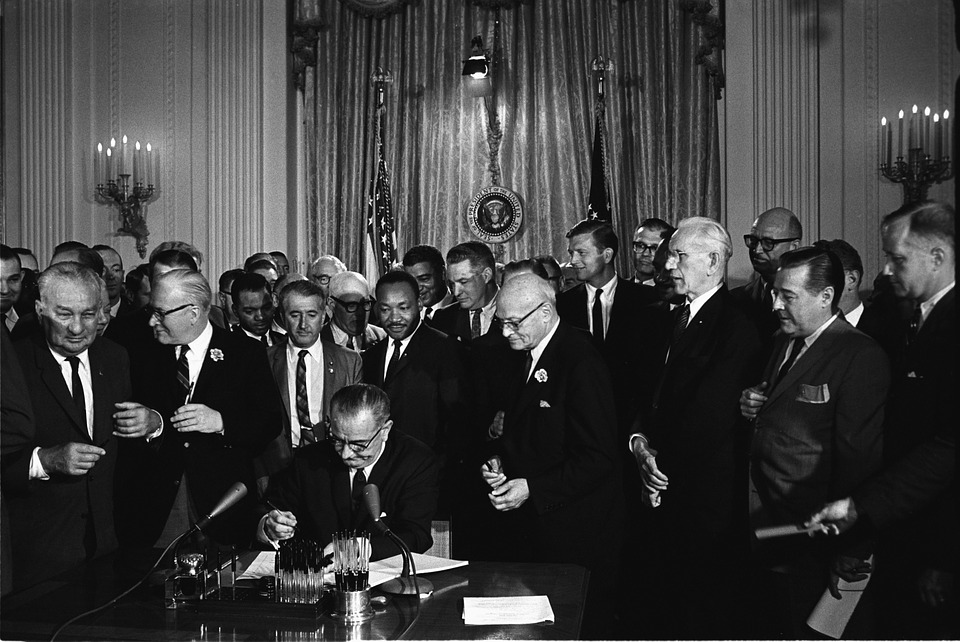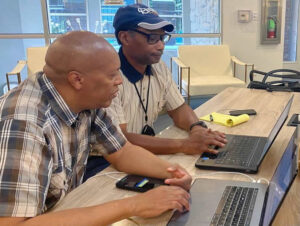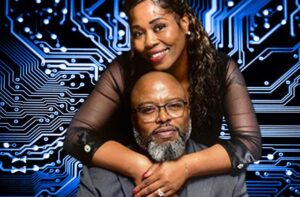Dr. King’s death…A sad moment in time

Arson, riots and looting followed
By Juanita Bratcher
(From CopyLine archives)
It was a shot heard around the world. A dastardly act had sent shock waves throughout the nation, throughout the world. Dr. Martin Luther King, Jr., civil rights leader, Nobel Peace Prize Laureate, had been struck down by an assassin’s bullet…murdered on the balcony of the Lorraine Hotel in Memphis, Tennessee. People of the world, of all races and ethnic backgrounds, were saddened, shocked, stunned, angry; grief-stricken over the senseless crime. They mourned the loss of a great American.
On April 4, 1968, the 39-year-old King, the “father” of nonviolence in the Civil Rights Movement, was struck in the neck by a bullet fired from a flophouse, while standing on the 2nd Floor balcony of the Lorraine Hotel. He was dead an hour later. He died in St. Joseph Hospital at 7 p.m. His body was taken to the County Morgue.
The night before his death, King told a crowd of some 2,000 cheering supporters that there had been threats directed against him in Memphis. Expounding further, he said, “Like anybody, I would like to live a long life. Longevity has its place. But I’m not concerned about that now. I just want to do God’s will. And He’s allowed me to go up to the mountaintop. And I’ve looked over, and I’ve seen the promised land. I may not get there with you, but we, as a people will get to the promise land.”
His widow, Coretta Scott King, said the threat of death was always present.
As soon as the news of his assassination spread, it triggered off a national rebellion; violence erupted in cities across the nation, specifically in urban cities. Several cities went up in smoke. Angry crowds looted and burned stores in many black neighborhoods. Autos were overturned and windows were smashed. In some areas of Chicago it was a city in flames. Smoke blackened the skies as terror ripped through the neighborhoods of the West, South and Near North Sides of Chicago. But the brunt of the devastation was on the West Side, known as King’s second home. Scores of people were arrested. Mayor Richard J. Daley, then mayor of the City of Chicago, issued an order to “shoot to kill or maim.”
In Atlanta, bricks, rocks and garbage cans were hurled through the windows of white-owned businesses. Rifle fire erupted at Tennessee A&M University. Philadelphia Mayor James Tate declared a proclamation which forbade persons to congregate in groups of 12 or more. Police and national guardsmen were injured in an exchange of gunfire with snipers near A&T State University at Greensboro, N.C. Five hundred national guardsmen were ordered into Pine Bluff, Ark. by Gov. Winthrop Rockefeller.
The late Robert Kennedy called it a time of “shame and sorrow.”
Stokely Carmichael, a member of the Student Nonviolent Coordinating Committee (SNCC), declared that “White America is incapable of dealing with the (race) problem,” and warned that there would be increasing violence in the streets.
“When White America killed Dr. King last night she declared war on us…” Carmichael said. “We have to retaliate for the deaths of our leaders. The executions of those deaths will not be in the courtrooms. They’re going to be in the streets of the United States of America.”
At the outset of the riots, nine people were killed in Chicago; property damage was placed in the millions of dollars, and 3,000 national guardsmen were called in.
President Lyndon Johnson issued a proclamation to bring in about 6,000 federal and National Guard troops into Washington, D.C., to restore peace in a city where five people had already been killed, 350 hurt, and 748 arrested.
There were riots in other cities, including Detroit, New York, Philadelphia, Atlanta, Ga., Nashville, Tennessee, Pittsburgh, Raleigh and Greensboro, North Carolina.
Johnson made an appeal to Whites, telling them to renounce racism, root out every trace of racism from their hearts, and to put pressure on Congress to pass civil rights and other legislation to help the “Negro.”
Rev. Ralph D. Abernathy, one of King’s closest friends and confidant, called for nonviolence as he prayed over King’s casket. He stressed that one must “Love your enemies. Bless them that curse you. Trust in the Lord.” He said that Dr. King, the foremost apostle of nonviolence, image should not be tarnished by turning to violence.
It was a moment in time…a sad moment in time. The “dreamer” was gone, but not the dream – the dream that Dr. King so often talked about. During the historical “March on Washington”, King articulated that dream to more than 250,000 people.
King said: “I say to you today, my friends, that in spite of the difficulties and frustrations of the moment I still have a dream. It is a dream deeply rooted in the American dream. I have a dream that one day this nation will rise up and live out the true meaning of its creed: We hold these truths to be self-evident ; that all men are created equal…And if America is to be a great nation this must become true…”
King was a “drum major” for justice and peace. He beat the drums for the poor, the disenfranchised, sometimes with direct action or confrontations, always non-violent. He tried to love somebody. “…I’d like somebody to mention that day (after his demise) that Martin Luther king, Jr. tried to love somebody…I want you to be able to say that day that I did try to feed the hungry. I want you to say that I tried to love and serve humanity…”
In 1955, King led marches in Montgomery, Alabama, against the city’s transportation system, a protest triggered off by Rosa Parks, a Black woman who refused to give up her seat on a city bus to a white man. Parks was arrested.
He was also at the forefront of protest marches, calling for desegregation of public facilities, and he pushed for voting rights of African Americans in order to gain political and economic empowerment.
In 1966, King moved into a slum neighborhood on the West Side of Chicago (January 26) in a rundown apartment at 1550 S. Hamlin, to dramatize sordid life in Negro slums. He held rallies on the South and West Sides. At one of his many rallies – during the summer of 1966 – King told hundreds of his supporters, “This day we must decide to fill up the jails of Chicago, if necessary, in order to end slums.” In August of that year, while he was leading a march through Marquette Park, he was knocked down by a rock thrown from the crowd. However, King marched on. “I have to do this…to bring this hate into the open,” he said.
The “father” of the Civil Rights Movement never wavered on his nonviolence method to get things done. But the man of non-violence was met with violence.
King was born January 15, 1929.








